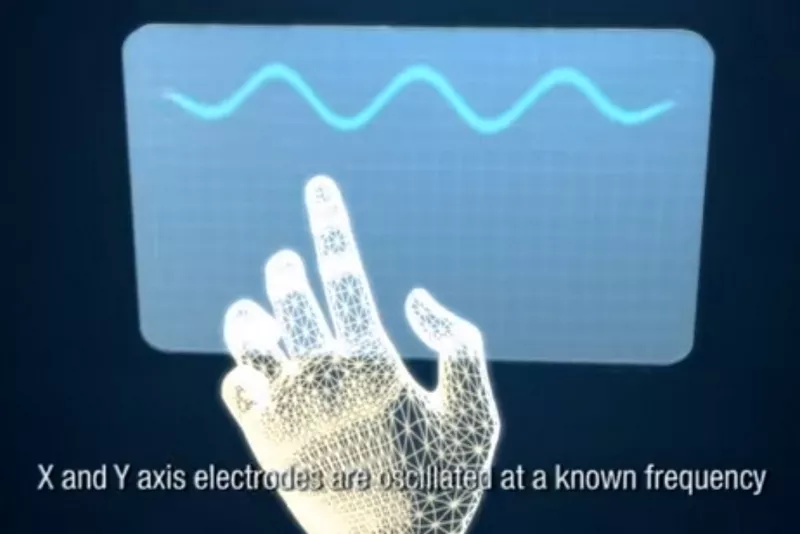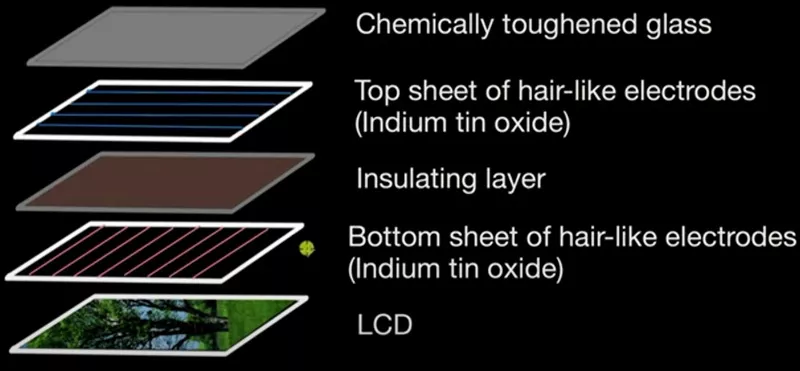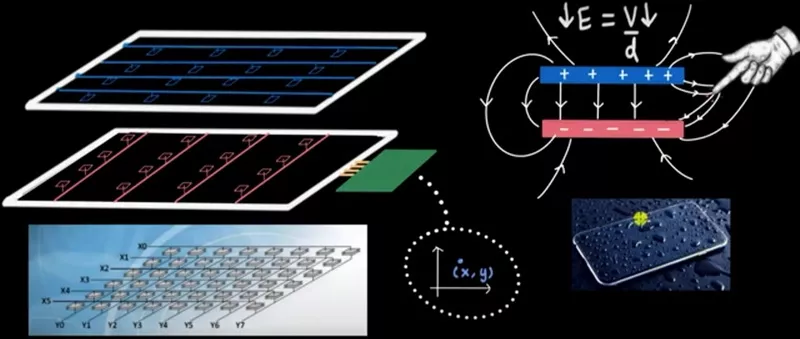News
How Does Capacitive Touch Screen Work Pdf?
How Does capacitive touch screen Work Pdf?
Content Menu
● 1. Introduction to Capacitive Touch Screen
● 2. The Mechanism Behind Capacitive Touch Screen
● 3. Types of Capacitive Touch Screen
● 4. Advantages of Capacitive Touch Screen
● 5. Applications of Capacitive Touch Screen
● 6. Limitations of Capacitive Touch Screen
● 7. Future Trends in capacitive touch screen Technology
● 9. Frequently Asked Questions
>> 1. What is the main difference between capacitive and resistive touch screen?
>> 2. Can capacitive touch screen work with gloves?
>> 3. What are some common applications of capacitive touch screen?
>> 4. Why are capacitive touch screen preferred over resistive ones?
>> 5. Are there any maintenance tips for capacitive touch screen?
capacitive touch screen have transformed the way we interact with technology, especially in smartphones, tablets, and various other electronic devices. Understanding how these screens operate can provide insights into their functionality, advantages, and applications. This article will delve into the working principles of capacitive touch screen, their types, and their significance in modern technology.
1. Introduction to Capacitive Touch Screen
A capacitive touch screen is a type of display technology that uses the electrical properties of the human body to detect touch. Unlike resistive touch screens, which rely on pressure, capacitive screens respond to the conductive nature of a finger or a specialized stylus. This allows for a more responsive and intuitive user experience.
When a finger touches the screen, it creates a change in the electrostatic field of the screen. This change is detected by sensors embedded within the screen, allowing the device to determine the location of the touch input.
2. The Mechanism Behind Capacitive Touch Screen
capacitive touch screen operate based on capacitance, which is the ability of a system to store an electric charge. The basic components include:
- Conductive Layer: Typically made from materials like Indium Tin Oxide (ITO), this layer is coated on the underside of the screen.
- Electrodes: Arranged in a grid pattern beneath the glass surface, these electrodes create an electrostatic field across the screen.
- Controller: This component processes touch data and interprets changes in capacitance.
How It Works:
1. Electrostatic Field Creation: The conductive layer generates an electrostatic field across the screen.
2. Touch Detection: When a finger approaches or touches the screen, it disrupts this field. The finger acts as a conductor, drawing a small charge to itself.
3. Capacitance Change: The change in capacitance at that specific point is detected by the electrodes.
4. Location Calculation: The controller calculates the location of the touch based on which electrodes are affected and by how much.
3. Types of Capacitive Touch Screen
There are two primary types of capacitive touch screen:
- Surface Capacitive Touch Screen: These have sensors located at the corners of the screen. When a finger touches anywhere on the surface, it creates a voltage drop that can be measured at these corners.
- Projected capacitive touch screen (PCAP): This type uses a grid of electrodes arranged in rows and columns, allowing for multi-touch capabilities and more accurate touch detection.
4. Advantages of Capacitive Touch Screen
capacitive touch screen offer several advantages over other technologies:
- High Sensitivity: They respond to light touches without requiring pressure.
- Multi-Touch Support: Users can perform gestures like pinch-to-zoom or swipe with multiple fingers.
- Durability: The glass surface is resistant to scratches and wear compared to plastic surfaces.
- Clarity: Capacitive screens provide better image quality due to their glass construction.
5. Applications of Capacitive Touch Screen
capacitive touch screen are widely used across various industries due to their versatility:
- Consumer Electronics: Predominantly found in smartphones and tablets for intuitive navigation and interaction.
- Kiosks and Point-of-Sale Systems: Used in fast-food restaurants and retail environments for quick order processing.
- Automotive Interfaces: Integrated into dashboards for navigation and control systems.
- Healthcare Devices: Utilized in medical equipment for patient monitoring and diagnostics due to their hygienic surfaces.
Expanded Applications:
In addition to these common uses, capacitive touch screen are increasingly being integrated into various sectors:
- Gaming Consoles: Modern gaming devices incorporate capacitive technology into controllers, allowing players to interact through swipes or taps, enhancing gameplay experiences significantly.
- Industrial Control Panels: In industrial environments, these screen serve as Human-Machine Interfaces (HMIs), allowing operators to control machinery and monitor processes efficiently.
- Smart Home Devices: Capacitive touch interfaces are becoming standard in smart home technology, enabling users to manage lighting, security systems, and climate control with ease.
6. Limitations of Capacitive Touch Screen
While capacitive touch screen have numerous benefits, they also come with certain limitations:
- Non-Conductive Objects: They do not work with non-conductive materials like regular gloves unless they are specially designed with conductive threads.
- Cost: Generally more expensive than resistive touch screen due to their advanced technology.
- Environmental Sensitivity: Performance can be affected by extreme temperatures or humidity levels.
Additional Limitations:
- Ghosting Phenomenon: In multi-touch scenarios, some capacitive screen may misinterpret touches due to interference from adjacent sensors.
- Durability Concerns: Although they are generally more durable than resistive screens, capacitive displays can still be prone to scratches and cracks if not properly protected.
7. Future Trends in Capacitive Touch Screen Technology
The evolution of capacitive touch screen technology has seen significant advancements over time. As we look towards the future, several trends are emerging:
1. Flexible Displays: Innovations are paving the way for flexible capacitive displays that can bend or curve without losing functionality.
2. Gesture Recognition: Advanced sensors may allow for gesture-based controls without physical contact with the screen.
3. Integration with IoT Devices: As smart homes become more prevalent, capacitive screens will play a crucial role in managing interconnected devices seamlessly.
4. Enhanced Durability Features: Future designs may incorporate materials that increase resistance to scratches and impacts while maintaining clarity.
5. Biometric Integrations: Embedding fingerprint sensors directly into capacitive displays will enhance security while providing a sleek design aesthetic.
8. Conclusion
Capacitive touch screen represent a significant advancement in user interface technology, providing enhanced sensitivity, multi-touch capabilities, and durability. Their applications span various industries, making them integral to modern electronic devices. As technology continues to evolve, we can expect further innovations in capacitive touch technology that will enhance user experiences even more.
9. Frequently Asked Questions
1. What is the main difference between capacitive and resistive touch screen?
- Capacitive touch screens detect touch through conductivity while resistive screen require pressure to register input.
2. Can capacitive touch screen work with gloves?
- Standard gloves do not work with traditional capacitive screen; however, some advanced models can detect conductive gloves.
3. What are some common applications of capacitive touch screen?
- They are commonly used in smartphones, tablets, kiosks, automotive interfaces, and medical devices.
4. Why are capacitive touch screen preferred over resistive ones?
- They offer better sensitivity, multi-touch support, durability, and image clarity compared to resistive screens.
5. Are there any maintenance tips for capacitive touch screen?
- Use a soft microfiber cloth moistened with alcohol or mild soap solution for cleaning; avoid abrasive materials that may scratch the surface.
By understanding how capacitive touch screens work and their implications on technology use today, users can appreciate their role in enhancing interaction with digital devices. The ongoing advancements promise an exciting future where our interactions with technology will be even more seamless and intuitive.
DINGTouch: Committed to continuous innovation and improvement of product quality to meet customers' high requirements and expectations.
DINGTouch is a manufacturer that provides high quality touch screen panels. Focus on the design, manufacturing and sales of touch screen panels, and are committed to providing customized solutions that satisfy customers.
DINGTouch: In the process of customizing touch screen panels, we focus on close cooperation and communication with customers. Understanding customers' needs and providing customized solutions will meet customers' individual needs. The company's products are favored by customers for their high quality and reliability, and provide them with the best touchscreen panel solutions.
At DINGTOUCH, we are the world's leading touchscreen manufacturer, helping businesses around the world take advantage of this exciting technology. For more information, please visit the home page now.
Find the DINGTouch technical team to achieve the success of your company's new project.
How to choose touch screen customization?
DINGTouch is a company specializing in the R&D and production of touch screen technology, headquartered in Shenzhen, China. As a professional touch screen supplier, DINGTouch is committed to providing high-quality, stable and reliable touch screen products to meet the diverse needs of customers. We continue to carry out technological innovation and product optimization to ensure that its touch screen products have good sensitivity, accuracy and durability.
In addition to the products themselves, we also focus on cooperation and communication with customers, and are committed to providing customized solutions and excellent after-sales services. Through continuous efforts to improve product quality and customer satisfaction, we have established a good reputation in the touchscreen industry and won widespread market recognition.
What DINGTOUCH can do:
• PCAP maximum size 65”
• Multi-touch (Touch screen can be customized to your needs.)
• Optical bonding service/air bonding
• LCD interface: HDMI/RGB/MIPI/LVDS/EDP, etc.
• PCAP interface: IIC/USB interface
• CTP can customize the cover glass surface treatment process AG (anti-glare), AR (anti-reflection), AF (anti-fingerprint), waterproof, and glove touch
• Supports 0.55 mm-12 mm coverslip touch.
• Support operating temperature: -40℃-90℃.
Dingtouch Industrial Capacitive Touch Screen Manufacturer
In conclusion, Dingtouch as a professional touch screen manufacturer with more than 10 years touch screen experience.We have many capacitive touch screen. Such as5 inch touch screen,7 inch touch screen,10.1inch touch screen,15 inch touch screen,15.6 inch touch screen,17 inch touch screen,18.5 inch touch screen,19 inch touch screen,21.5 inch touch screen,32 inch touch screen, However, we also welcome to customize your own touch screen . Contact our team today to learn what capacitive touch screen are best for our retail business needs.
Contact us NOW! sales@szdingtouch.com

CATEGORIES
CONTACT US
Contact: Dingtouch
Phone: +8615815536116
Tel: +8615815536116
Email: sales@szdingtouch.com
Add: Building A, Bailu Plaza, No. 48, Gonghe Industrial Road, Gongle Community, Xixiang Street, Baoan District, Shenzhen,China. 518126










 Dingtouch
Dingtouch